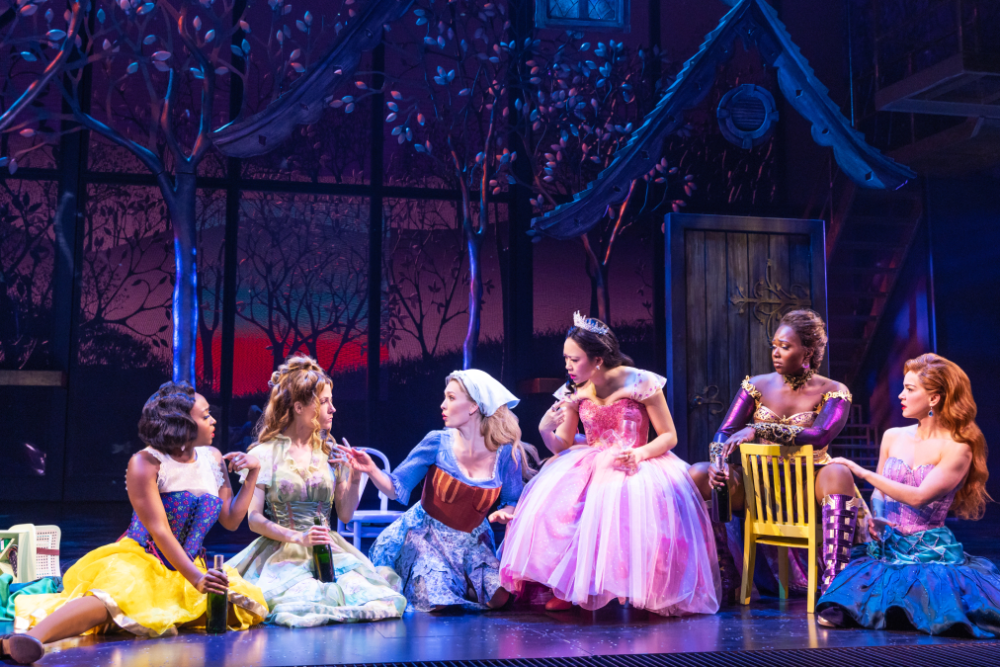“Once Upon a One More Time” emerges not just as a musical, but a cultural statement. Directed by choreographers Keone and Mari Madrid, renowned for their work with global sensations like Justin Bieber and BTS, and scripted by Jon Hartmere (known for “The Upside”), the production serves as Britney Spears‘ post-conservatorship authorized foray into the realm of Broadway, blending pop-iconography with feminist-forward narratives.
The musical challenges traditional storybook romanticism and outdated male-centric tropes, reimagining familiar fairy-tale heroines like Cinderella, Snow White, Rapunzel, and the Little Mermaid. Set against a backdrop of giddy dialogue and a rapier-fast score, “Once Upon a One More Time” cleverly juxtaposes the saccharine sweetness of fairy tales with a biting critique of their inherent misogyny.

At the heart of the story is Cinderella (Briga Heelan), weary of her superficial existence and her shallow relationship with Prince Charming (Justin Guarini). The arrival of the rogue Original Fairy Godmother (Brooke Dillman), armed with Betty Friedan’s “The Feminine Mystique,” sparks a revolution among the fairy-tale princesses. They begin to question the prescribed narratives of subservience and waiting for a prince charming, opting instead for autonomy and self-discovery.
The musical’s integration of Spears’ iconic songs feels seamless rather than forced, with tracks like “Work Bitch” and “Womanizer” serving as energetic anthems of rebellion and empowerment. Justin Guarini’s commanding presence and soulful vocals as Prince Charming add a layer of charisma, while Aisha Jackson’s Snow White and Jennifer Simard’s wicked Stepmother deliver standout vocal performances that underscore the show’s thematic depth.
Visually, the Madrids’ choreography dazzles with nods to ’80s and ’90s dance styles, blending Janet Jackson-esque military precision with playful nods to Britney-pop aesthetics. Anna Fleischle‘s set design enhances the narrative, from movable stages to whimsical movie-set backdrops that evolve with Cinderella’s evolving consciousness.

While the script’s pacing initially falters, particularly in the first act, the narrative gains momentum as it deftly deconstructs fairy-tale conventions. Adam Godley‘s portrayal of the Svengali-like narrator injects humor and critique, though his character’s development peaks later in the production.
Ultimately, “Once Upon a One More Time” achieves a delicate balance of entertainment and social commentary, offering a refreshing take on timeless tales through the lens of contemporary feminism. It’s a testament to Spears’ enduring influence and the evolving landscape of Broadway, where familiar stories find new resonance in the pursuit of equity and empowerment.






